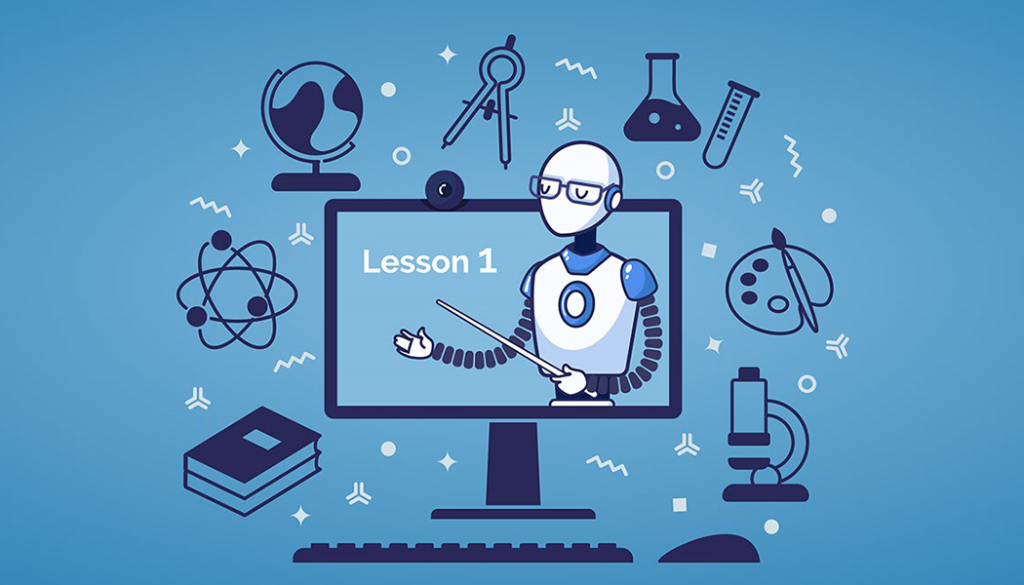
How to Measure the Effectiveness of AI Solutions in EdTech
Artificial Intelligence (AI) is revolutionizing the educational technology (EdTech) landscape, offering personalized learning experiences, automating administrative tasks, and providing insightful data analytics. However, with the widespread adoption of AI in EdTech, educators and institutions are now faced with the question of how to measure its effectiveness. In this article, we’ll explore key metrics and strategies that can be used to evaluate the success of AI-driven solutions in the education sector. We'll also discuss how Geniusee, a leading provider of software product development services, can help you implement and measure AI technologies https://geniusee.com/ai-in-edtech
1. Define Your Objectives
Before diving into the evaluation process, it is crucial to have clear objectives for your AI solutions. Different institutions may have varying goals for implementing AI in EdTech. Some might focus on improving student outcomes, while others prioritize reducing administrative burdens or increasing student engagement.
Key Considerations:
- Educational Outcomes: Are you aiming to improve student test scores or facilitate more personalized learning paths?
- Operational Efficiency: Are you looking to automate repetitive tasks like grading or scheduling?
- Engagement Levels: Are you trying to increase interaction between students and content, or between teachers and students?
Understanding these objectives is the first step in determining the right metrics for evaluating AI effectiveness.
2. Measure Student Performance and Learning Outcomes
One of the most direct ways to measure the effectiveness of AI solutions in EdTech is by evaluating student performance. AI tools like personalized learning platforms or AI-powered tutoring systems are designed to adapt to individual student needs, theoretically leading to better learning outcomes.
Metrics to Track:

- Test Scores: Compare pre- and post-implementation test scores to see if AI tools contribute to improved performance.
- Completion Rates: Monitor the completion rates of assignments or courses in AI-supported environments.
- Time Spent Learning: Track whether students are spending more time engaging with learning materials, which could indicate increased interest and understanding.
Geniusee can help you develop and integrate AI-powered solutions that not only personalize learning experiences but also provide detailed analytics on student performance.
3. Analyze User Engagement and Interaction
User engagement is another critical metric for assessing the success of AI in EdTech. High levels of engagement often correlate with better learning experiences and outcomes.
Key Metrics:
- Usage Frequency: Track how often students or educators interact with AI tools, such as virtual tutors or automated grading systems.
- Student-Content Interaction: Measure how frequently students engage with learning materials, quizzes, or interactive content.
- Teacher-Student Interaction: AI can facilitate more meaningful interaction by freeing up teachers’ time. Evaluate whether AI allows educators to spend more time engaging with students rather than performing administrative tasks.
By tracking these metrics, you can gain insights into how effective your AI solutions are at fostering engagement in the classroom. Geniusee offers tailored software development services to create AI-driven platforms that increase both student and teacher interaction.
4. Evaluate Administrative Efficiency
AI is not just about improving learning; it’s also about streamlining operations. Many EdTech AI solutions are designed to automate administrative tasks, allowing educators and institutions to focus more on teaching and less on paperwork.
Efficiency Metrics:
- Task Automation Rate: Measure the number of tasks that are now automated, such as attendance tracking, grading, or scheduling.
- Time Saved: Calculate the time saved by educators and administrators due to automation.
- Cost Savings: Determine the cost-effectiveness of implementing AI by comparing labor costs before and after automation.
Geniusee’s expertise in AI software development can help create administrative solutions that not only reduce time and effort but also provide actionable data on efficiency improvements.
5. Assess Scalability and Flexibility
Another key consideration when evaluating AI solutions is their scalability and flexibility. As educational institutions grow or curricula change, your AI tools need to be able to adapt without losing effectiveness.
Scalability Metrics:
- User Growth: Measure how well the AI system handles an increasing number of users, whether students or educators.
- Content Flexibility: Evaluate how easily the AI can adapt to new content or educational materials.
- Performance Across Different Demographics: Test whether AI provides consistent results for different types of learners, such as students from different socioeconomic backgrounds or learning levels.
Geniusee ensures that AI solutions are designed for scalability and adaptability, providing long-term value as your institution evolves.
6. Gather Feedback from Users
Quantitative data can only tell part of the story. Gathering qualitative feedback from both educators and students is essential to fully understanding the effectiveness of AI solutions in EdTech.
Feedback Collection Methods:
- Surveys: Distribute surveys to gather opinions on user experience, ease of use, and perceived effectiveness of the AI tools.
- Interviews: Conduct interviews with educators to gain deeper insights into how AI has impacted their teaching methods and workloads.
- Focus Groups: Organize focus groups with students to understand their interaction with the AI systems and how it has affected their learning.
Combining qualitative feedback with quantitative data gives a holistic view of AI performance. Geniusee offers tools for collecting and analyzing feedback, ensuring that your AI solutions meet the needs of all users.
7. Monitor Long-Term Impact
The effectiveness of AI in EdTech should not just be measured in the short term. Long-term metrics such as student retention, graduation rates, and lifelong learning outcomes are critical indicators of whether AI tools are providing sustainable benefits.
Long-Term Metrics:
- Retention Rates: Track whether students who interact with AI tools are more likely to continue their studies or complete their courses.
- Graduation Rates: Monitor the impact of AI on graduation rates and overall academic success.
- Post-Graduation Success: Analyze whether students who used AI tools are more successful in their careers or further education.
Geniusee specializes in developing AI solutions that provide ongoing value, offering tools to track and analyze long-term educational outcomes.
Conclusion
Measuring the effectiveness of AI solutions in EdTech requires a comprehensive approach that includes both quantitative and qualitative metrics. By focusing on student performance, engagement, administrative efficiency, scalability, and long-term impact, you can gain a complete picture of how AI is transforming your educational environment. Geniusee, with its extensive experience in software product development, is well-equipped to help you implement, optimize, and measure AI-driven solutions that meet the evolving needs of the education sector.
With the right strategies in place, AI can become a powerful tool for enhancing both learning and operational efficiency in educational institutions.

